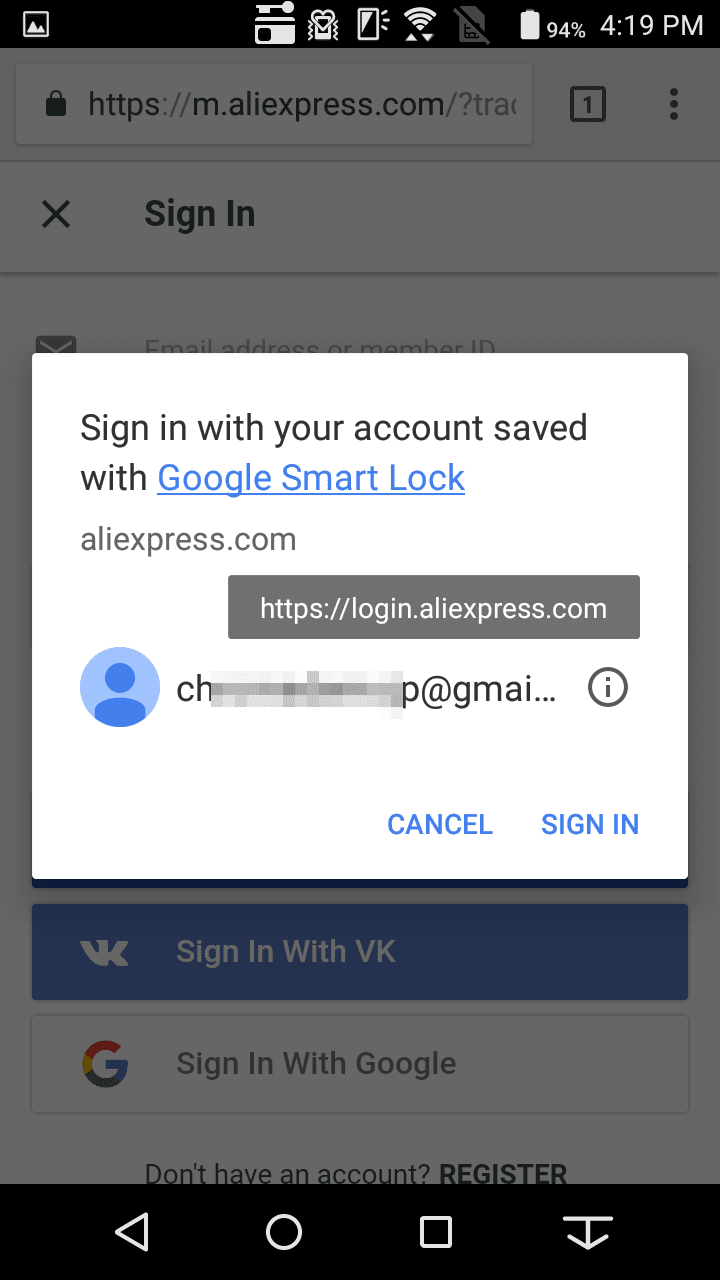Some of the updates described here are explained in the Google I/O session, Secure and Seamless Sign-In: Keeping Users Engaged:
Chrome 57
Chrome 57 introduced this important change to the Credential Management API.
Credentials can be shared from a different subdomain
Chrome can now retrieve a credential stored in a different subdomain using the
Credential Management API.
For example, if a password is stored in login.example.com,
a script on www.example.com can show it as one of account items in account chooser dialog.
You must explicitly store the password using navigator.credentials.store(),
so that when a user chooses a credential by tapping on the dialog,
the password gets passed and copied to the current origin.
Once it's stored, the password is available as a credential
in the exact same origin www.example.com onward.
In the following screenshot, credential information stored under login.aliexpress.com
is visible to m.aliexpress.com and available for the user to choose from:

Chrome 60
Chrome 60 introduces several important changes to the Credential Management API:
As the custom
fetch()function is no longer required to fetch the password, it will be deprecated soon.navigator.credentials.get()now accepts an enummediationinstead of boolean flagunmediated.New method
navigator.credentials.create()asynchronously creates credential objects.
Feature detection needs attention
To see if the Credential Management API for accessing password-based and
federated credentials is available, check if window.PasswordCredential or
window.FederatedCredential is available.
if (window.PasswordCredential || window.FederatedCredential) {
// The Credential Management API is available
}
PasswordCredential object now includes password
The Credential Management API took a conservative approach to handling passwords.
It concealed passwords from JavaScript, requiring developers
to send the PasswordCredential object directly to their server
for validation via an extension to the fetch() API.
But this approach introduced a number of restrictions. We received feedback that developers could not use the API because:
They had to send the password as part of a JSON object.
They had to send the hash value of the password to their server.
After performing a security analysis and recognizing that concealing passwords from JavaScript did not prevent all attack vectors as effectively as we were hoping, we have decided to make a change.
The Credential Management API now includes a raw password in a returned credential object so you have access to it as plain text. You can use existing methods to deliver credential information to your server:
navigator.credentials.get({
password: true,
federated: {
providers: [ 'https://accounts.google.com' ]
},
mediation: 'silent'
}).then(passwordCred => {
if (passwordCred) {
let form = new FormData();
form.append('email', passwordCred.id);
form.append('password', passwordCred.password);
form.append('csrf_token', csrf_token);
return fetch('/signin', {
method: 'POST',
credentials: 'include',
body: form
});
} else {
// Fallback to sign-in form
}
}).then(res => {
if (res.status === 200) {
return res.json();
} else {
throw 'Auth failed';
}
}).then(profile => {
console.log('Auth succeeded', profile);
});
Custom fetch will be deprecated soon
To determine if you are using a custom fetch() function,
check if it uses a PasswordCredential object or a FederatedCredential object
as a value of credentials property, for example:
fetch('/signin', {
method: 'POST',
credentials: c
})
Using a regular fetch() function as shown in the previous code example,
or using an XMLHttpRequest is recommended.
navigator.credentials.get() now accepts an enum mediation
Until Chrome 60,
navigator.credentials.get() accepted an optional unmediated property
with a boolean flag. For example:
navigator.credentials.get({
password: true,
federated: {
providers: [ 'https://accounts.google.com' ]
},
unmediated: true
}).then(c => {
// Sign-in
});
Setting unmediated: true prevents the browser from showing the account chooser
when passing a credential.
The flag is now extended as mediation. The user mediation could happen when:
A user needs to choose an account to sign-in with.
A user wants to explicitly sign-in after
navigator.credentials.requireUseMediation()call.
Choose one of the following options for the mediation value:
mediation value |
Compared to boolean flag | Behavior | |
|---|---|---|---|
silent |
Equals unmediated: true |
Credential passed without showing an account chooser. | |
optional |
Equals unmediated: false |
Shows an account chooser if
preventSilentAccess() called previously. |
|
required |
A new option | Always show an account chooser. Useful when you want to let a user to switch an account using the native account chooser dialog. |
In this example,
the credential is passed without showing an account chooser,
the equivalent of the previous flag, unmediated: true:
navigator.credentials.get({
password: true,
federated: {
providers: [ 'https://accounts.google.com' ]
},
mediation: 'silent'
}).then(c => {
// Sign-in
});
requireUserMediation() renamed to preventSilentAccess()
To align nicely with the new mediation property offered in the get() call,
the navigator.credentials.requireUserMediation() method has been renamed to
navigator.credentials.preventSilentAccess().
The renamed method prevents passing a credential without showing the account chooser (sometimes called without user mediation). This is useful when a user signs out of a website or unregisters from one and doesn't want to get signed back in automatically at the next visit.
signoutUser();
if (navigator.credentials) {
navigator.credentials.preventSilentAccess();
}
Create credential objects asynchronously with new method navigator.credentials.create()
You now have the option to create credential objects asynchronously
with the new method, navigator.credentials.create().
Read on for a comparison between both the sync and async approaches.
Creating a PasswordCredential object
Sync approach
let c = new PasswordCredential(form);
Async approach (new)
let c = await navigator.credentials.create({
password: form
});
or:
let c = await navigator.credentials.create({
password: {
id: id,
password: password
}
});
Creating a FederatedCredential object
Sync approach
let c = new FederatedCredential({
id: 'agektmr',
name: 'Eiji Kitamura',
provider: 'https://accounts.google.com',
iconURL: 'https://*****'
});
Async approach (new)
let c = await navigator.credentials.create({
federated: {
id: 'agektmr',
name: 'Eiji Kitamura',
provider: 'https://accounts.google.com',
iconURL: 'https://*****'
}
});
Migration guide
Have an existing implementation of the Credential Management API? We have a migration guide doc you can follow to upgrade to the new version.

